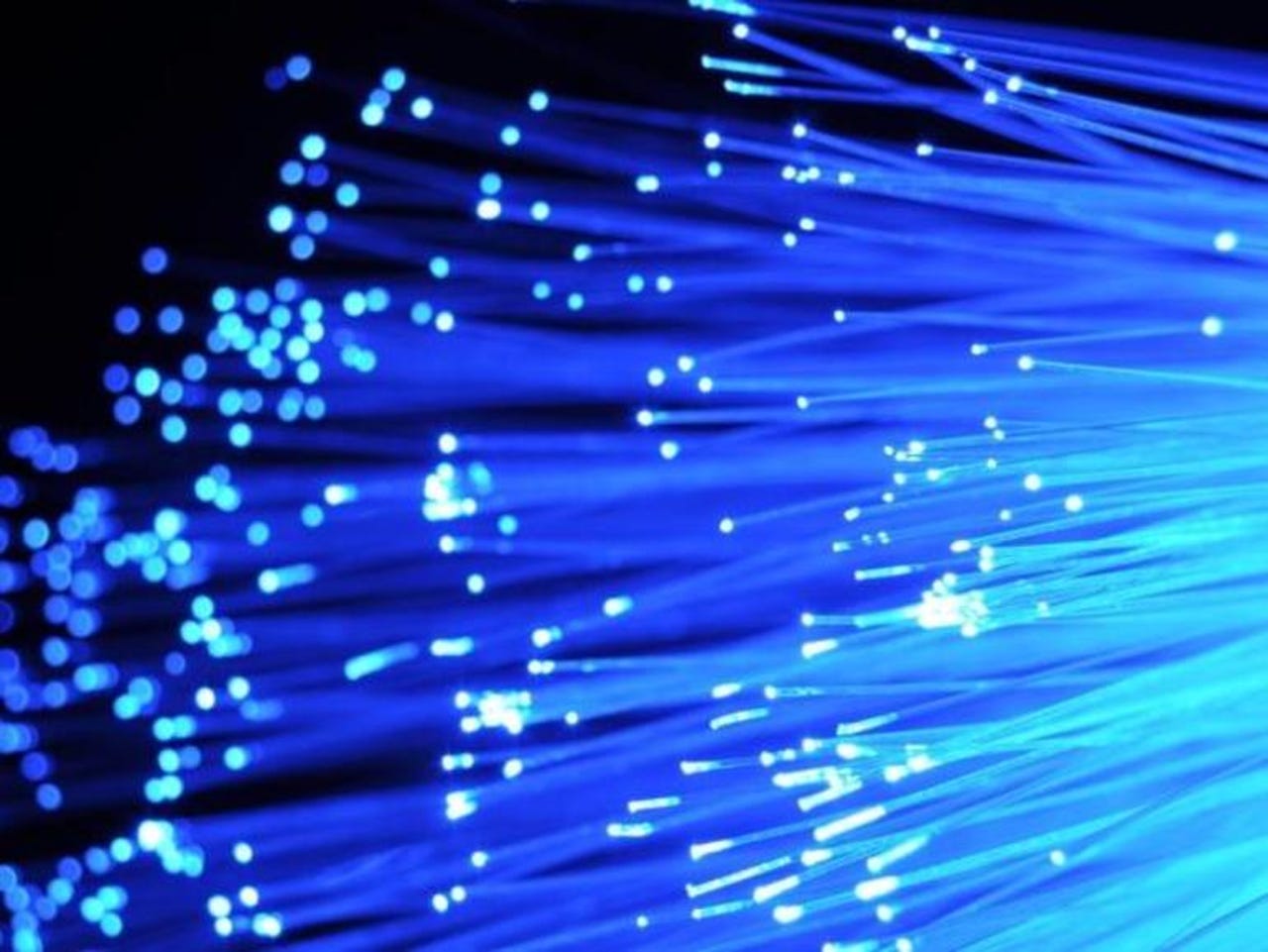Here comes the terabit per second network

In the US, the Federal Communications Commission (FCC) has redefined broadband as being at least 25 Mbps down and 3 Mbps up. While some moronic senators think that's too fast, everyone else knows it's way too slow. The technical problem is the demand for broadband has grown ever higher -- thanks Netflix -- while the Internet backbones can't keep up with the demand.

Until now. Today, Internet backbone connections tend to run at 40 Gigabits (Gb) per second, while 100Gb is becoming more common. That's good, but that's not good enough. Fortunately, new research projects point the way to the terabit (Tb) Internet.
First, the California Institute of Technology (CalTech) has developed a laser that can quadruple internet speeds. The project's chief scientist, Amnon Yariv, claims that this new improved laser is "capable of a 4x increase in the number of bytes-per-second carried by each channel" on existing fiber-optic Internet backbones. This alone would boost 40 Gbps backbones to 160 Gbps.
Smartphones
That's good, but there's faster coming.
Instead of engineering a better laser, University College London (UCL) researchers set a new record of 1.125 terabits per second over fiber optic. They did this by using advanced digital signal processing (DSP) algorithms to optimize the signal to noise ratio (SNR) to maximize data throughput.
According to lead researcher, Dr Robert Maher, "While current state-of-the-art commercial optical transmission systems are capable of receiving single channel data rates of up to 100 Gigabits per second, we are working with sophisticated equipment in our lab to design the next generation core networking and communications systems that can handle data signals at rates in excess of 1 terabit per second."
This is done by bonding fifteen separate data transmission channels into a single "super-channel." Each channel contains data modulated using the 256 Quadrature amplitude modulation (QAM). 256 QAM is the same modulation scheme that 802.11ac Wi-Fi uses to deliver 1 Gbps speeds.
This isn't just theory. The UCL researchers have shattered old record with a 15-carrier super-channel achieving the highest throughput (1.125 Tb/s) ever recorded using a single coherent receiver.
For now, the UCL team hasn't tried to reproduce their results on long cable runs. I have no doubt they'll be successful at delivering similar speeds at not just the hundreds of meters required for a data-center network but for the hundreds of kilometers (KM) needed for an Internet backbone.
Their work, after all, is based on earlier work using similar techniques to bust network distance records. The UCL crew showed their technology could transmit error-free signals up from 3,190 KM (1,982 miles) to 5,890 KM (3,660 miles).
What this means for you at your home or office is that by decade's end the Internet backbone should be in place to deliver 20 Gbps 5G and 1 Gbps last mile Internet not just to major cities but to everyone. Always presuming, of course, that the local carriers will pay to upgrade their networks and our local Internet infrastructure.
Related Stories: